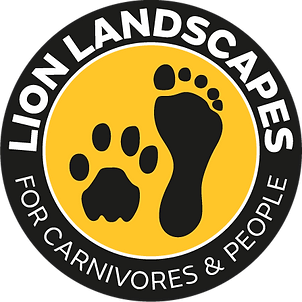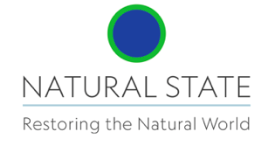The Lion Lifelines Project exists to scale the delivery of conservation impact through private finance. Starting in 2024 with a generous grant from the Paul G Allen Family Foundation, the project is developing two impact-linked financial mechanisms designed to deliver large-scale restoration and protection of nature, while also enabling economically vulnerable communities to financially benefit from their natural assets. In collaboration with local partners, this project translates long-term conservation projects into investable products to enhance the financial value of nature for its custodians.
CONSERVATION CONTEXT
Nature underpins our societies and economies, and must be conserved for a sustainable future. Yet, nature is disappearing globally at scales and rates unprecedented in human history, with more than a million species threatened with extinction. African lions – an iconic species and major indicator of ecosystem health – have declined dramatically in number over the past century from an estimated 200,000 to around 25,000 remaining. There has been a 43% decline in monitored lion populations since 1993, and they have disappeared from over 90% of their historic range. Drivers of loss are anthropogenic, stemming from a loss of habitat, reduced availability of wild prey and increased conflict with humans.
Despite these large-scale declines, the benefits of biodiversity are immense. Beyond the intrinsic values, biodiversity underpins human wellbeing through the provision of soil fertility, water quality and functionality of ecosystems that help regulate climate. But biodiversity is not accounted for in current economic markets, and the costs of depleting biodiversity are usually ignored. Biodiversity hotspots tend to be in areas with high poverty and where wildlife often negatively impacts local communities. The perceived cost burden for communities of “living with wildlife” and the lack of tangible conservation benefits provide limited local incentives to protect nature, despite the value of the ecosystem services provided by nature. Conservation is inadequately funded through a patchwork of multi-lateral and bi-lateral funding, philanthropy and low-revenue commercial activities. Global fundraising targets specify US$ 200 billion per annum by 2030 to halt and reverse biodiversity loss, where African lions face an annual funding gap of US$1 billion to address populations in protected areas.
Large-scale growth of nature-based financing mechanisms provides an opportunity to restore biodiversity, mitigate climate change and provide benefits so local communities value and protect nature. However, notable barriers remain to ensure private finance flows to rigorous conservation impact required to reduce loss. The Lion Lifeline Projects exists to address these gaps: 1. Leveraging cutting-edge technology to reduce costs and enhance the quality of biodiversity monitoring, 2. Co-designing conservation interventions with local communities to ensure fine-scale relevance of interventions and 3. Designing financing structures that scale the delivery of additional conservation impact and financial benefit to engaged communities.
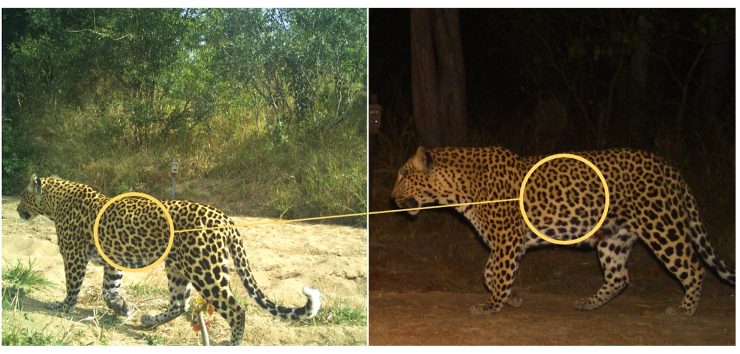
APPROACH
High-quality data, rapidly extracted from the field, are critical for evaluating the success or failure of project interventions. WildCRU and Natural State are partnering with world-leading institutions to develop impact monitoring systems at the Natural State Technology and Research Centre in Northern Kenya and multiple WildCRU field sites across Africa. The technology will combine the use of remote sensing products, various sensors, deployed on aerial and ground platforms including aerial scans, camera traps and acoustic sensors, with AI classification approaches to speed up target identification. The deployment of multiple sensors will gather large volumes of biodiversity data from project sites, which need to be converted into useful information. A bespoke fit-for-purpose “field-to-cloud” application will be developed to ingest the data and metadata in a verifiable manner Tested machine learning models will enable rapid classification of species observations.
We also need to assess the most effective interventions to drive change, both to address immediate threats to lions and wider biodiversity, as well as to support an investment thesis that will guide investment decisions. Drawing down on years of operation field data, robust intervention evaluation methods will outline underpinning drivers and barriers to achieving intended outcomes that allow for iterative improvement. It will be important to co-design components of this intervention in collaboration with the local community, regional manager and representative investors alike to manage expectations for project outcomes and ensure interventions are tailored to the local scale. It is essential to engage in co-design to support the equity of decision-making, and find suitable agreements for the distribution of financial benefits in line with positive conservation outcomes.
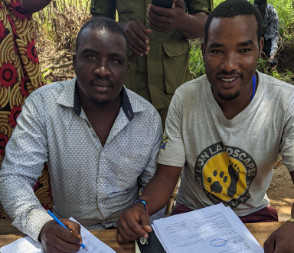
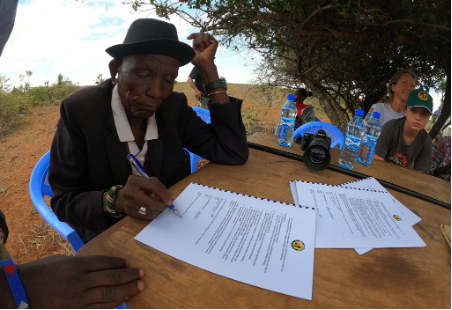
IMPACT HIGHLIGHTS
Tested intactness index
2024
Engaged community members in intervention review
2024
Presented and proposed solutions at the Royal Conference of Nature Finance in Bhutan.
April 2024
PROJECT MEMBERS
WildCRU Director Amy Dickman is a co-founder and joint CEO of Lion Landscapes; Alayne Cotterill joint CEO of Lion Landscapes; Harrison Carter, DPhil researcher focussing on nature finance and human-wildlife coexistence with Wild CRU, Lion Landscapes and ICCS; Matt Wijers, Post-Doctoral Researcher focussing on impact monitoring technology with WildCRU and TKPP; Kerry Hancock, trustee with Lion Landscapes focussing on programme management; Jonathan Baillie, CEO of Natural State.
PROJECT PARTNERS
We are grateful for the support of The Paul G Allen Family Foundation, the Lion Landscapes, the Trans Kalahari Predator Project, and the Natural State.

